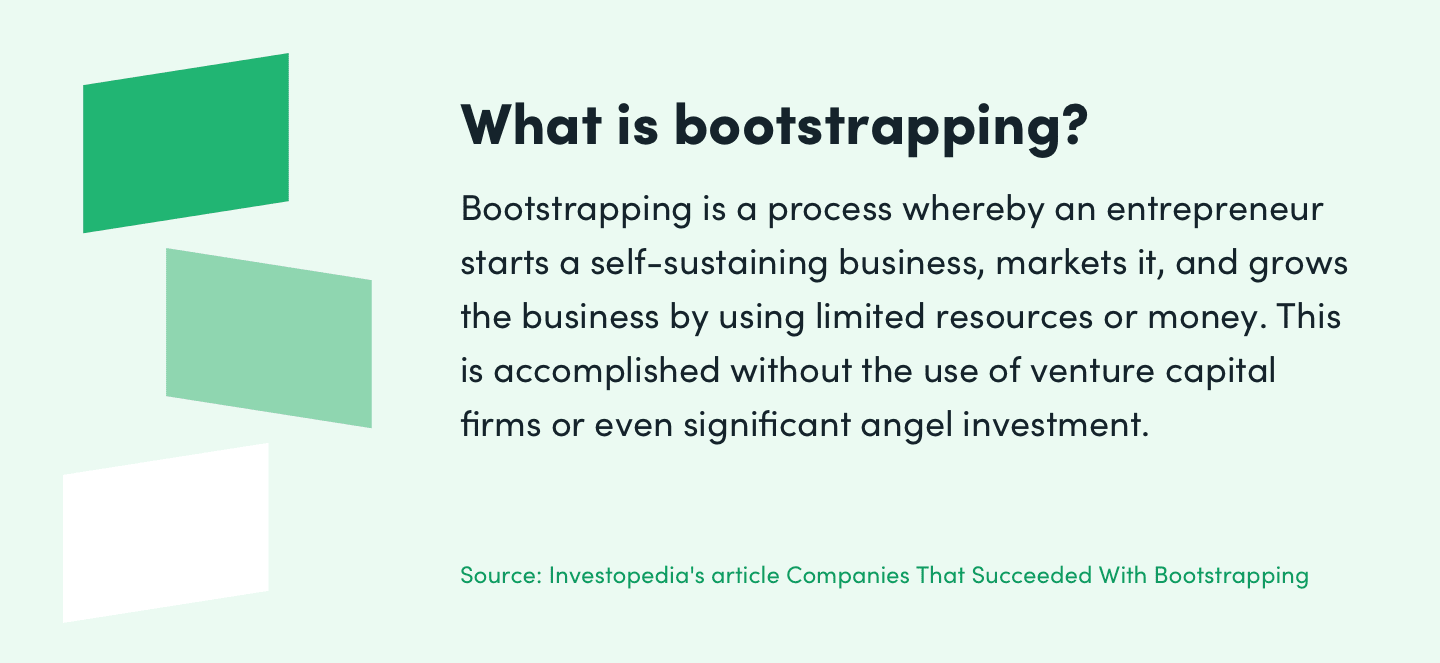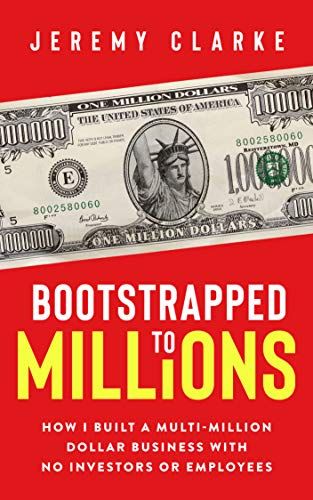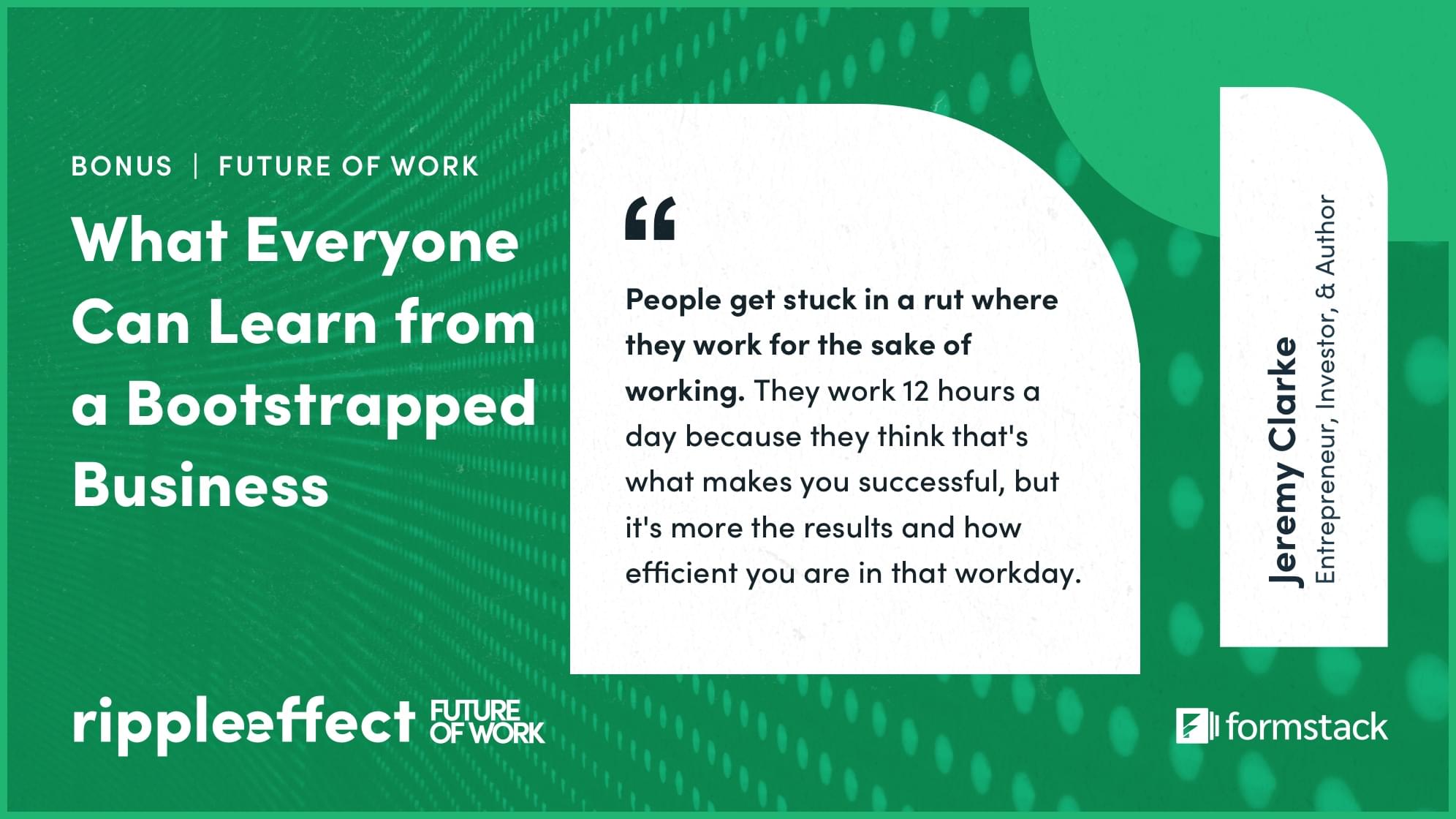In today’s media, a lot of press goes towards businesses with huge IPOs, mega valuations, and big acquisitions. From Salesforce acquiring Slack for $27.7 billion to WeWork’s fall from grace after an original valuation of $47 billion, we hear a lot about companies with huge valuations and lots of investors.
It’s true that unicorns, privately held startups with values of at least $1 billion, deserve a lot of recognition and praise. But don’t forget about the bootstrapped businesses.
What is a bootstrapped business?
Bootstrapping a business means that you take on no outside funding to run your business. This means no angel investors, no venture capital, and no outside investors. This form of entrepreneurship can be very difficult, but it comes with many benefits. From having more control over your decisions to being able to act quickly, relying on self-funding often enables business owners to be more agile and creative.

In the day and age of companies raising millions, sometimes even billions, it’s not as common to hear about bootstrapped businesses. Yet they can be just as successful as companies with hundreds of investors and big IPO plans.
In fact, you may know of one already: our document generation product, Formstack Documents, began as a bootstrapped business. We recently hosted its founder, Jeremy Clarke, on a special Future of Work episode of our Ripple Effect podcast to dig into the topic of bootstrapping and why Jeremy chose this route of entrepreneurship.

Listen Now: Want to hear Jeremy’s story first hand? Listen to his Ripple Effect episode What Everyone Can Learn from a Bootstrapped Business now!
Why bootstrap a business?
For Jeremy, bootstrapping was a strategic decision he made to ensure he could have control of his business. In fact, he not only bootstrapped the business, but he ran it on his own for nearly five years. His choice to bootstrap was driven by his desire to build the business by his own design, without needing to traverse lots of red tape or outside opinions.
For many entrepreneurs, the choice to bootstrap comes from a drive for independence and agility. When you take on investments, you have more people to report to and are expected to provide ROI on those investments. That can be a lot of pressure! For some business owners, the difficulty of going out on your own is a worthwhile challenge when it means having full control over your business.

Learn More: Jeremy recently launched a book about his experience bootstrapping a business. Check out Bootstrapped to Millions: How I Built a Multi-Million-Dollar Business with No Investors or Employees.
3 Business Lessons from Bootstrapping
As Jeremy shares in his episode, bootstrapping his business taught him a lot of great lessons on how to run a business more effectively and efficiently. As the sole employee for nearly five years, he took on every aspect of the business, including customer service, marketing, product development, and sales.
Even if you have no aspirations of starting your own business, the lessons Jeremy shares in his episode are relevant to anyone interested in building a better workday and contributing to the success of your organization. Below, we dig into three lessons Jeremy learned from his bootstrapping experience..
1. Put customers first.
As a business with one employee, it could have been easy for Jeremy to focus his attention on marketing, product development, or selling. But very early on, Jeremy realized that putting customers first was what would make his business successful.
It may seem like you always need to be hustling for new business, but the truth is that if you serve your current customers well, that will grow your business for you. From word of mouth referrals to current customers expanding their business with you, fulfilling the expectations of current customers will serve you well in the long run.

Pro Tip: Are manual processes slowing down your customer service initiatives? Check out Streamlining Your Customer Onboarding Process with Automation to find ways to improve response times and automate systems.
2. Offer what people want.
Whether you’re in a service-based industry or selling a product, you must offer what customers want to ensure consistent growth. You may think you know what they want, but without performing the proper research, outreach, and analysis, you may be far from the mark.
“Almost every feature I ever built was because a customer asked for it. I didn't go think of a bunch of ideas and go present them to potential customers. I waited for a customer to come to me and request something. [Then I'd] look into it and often, depending on the feature, build it as quickly as possible. And really it comes back to just wowing the customer.”
Customers are the lifeblood of any business, and when their needs are not met, your business will suffer. Taking the time to really listen to customers and develop solutions to their biggest problems will be what elevates your business to the next level.
3. Follow ruthless prioritization.
Burning yourself out is not going to lead to success. To ensure he didn’t work himself to death, Jeremy used ruthless prioritization to guide his workweeks. This required a lot of reflection on what tasks would make the biggest impact and pushing other lower-priority tasks off for the moment.

When you have a limited budget and manpower, ruthless prioritization will help you avoid feeling overwhelmed and stressed. When you’re able to stay laser focused on two to three things, instead of a never-ending to-do list, you’re able to better manage your time and achieve milestones. It may be hard at first, but this way of working will help you stay motivated and engaged, as well as improve overall progress.
Read Next: The Best Productivity Tools to Manage Tasks, Time, and Yourself
What Everyone Can Learn from a Bootstrapped Business
Whether you have dreams of becoming an entrepreneur or are focused on climbing the ranks at work, the tips Jeremy shares from his experience bootstrapping a business can be valuable to anyone. When you boil it down, he leaves listeners with one core message: manage your time well, and you’ll reap success.
Get more helpful tips and business strategies from Jeremy Clarke by listening to his Ripple Effect podcast episode What Everyone Can Learn from a Bootstrapped Business now!











